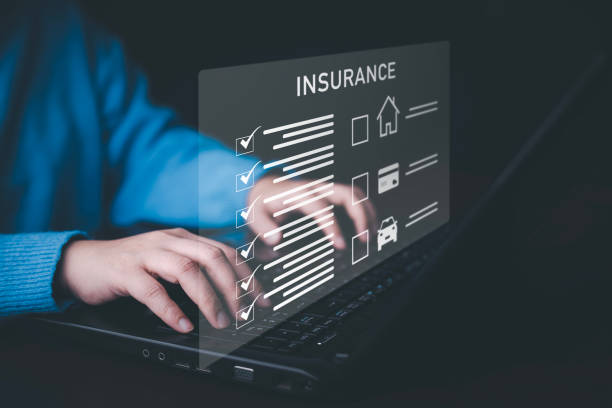Introduction to the Importance of E-commerce Website Design in Today’s World
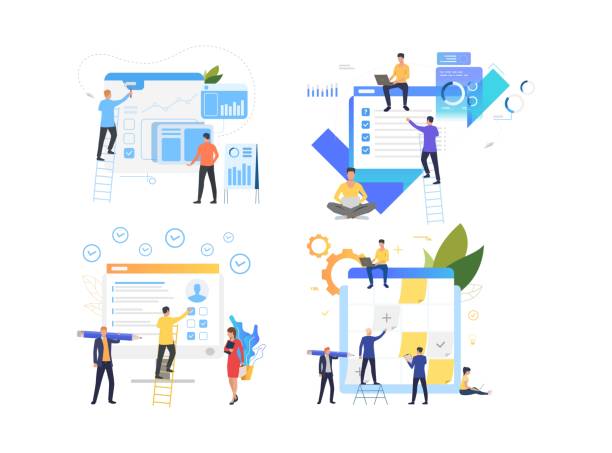
In the current era, where #internet has become an inseparable part of daily life, having a strong #digital_presence is essential for any business.
This necessity is especially evident in the realm of #e-commerce.
E-commerce website design is no longer an option, but a vital requirement for competition and growth in the market.
This platform is not only a showcase for your products and services but also a gateway to potential customers worldwide.
An efficient e-commerce website enables your business to operate without geographical and time limitations, being available to customers 24 hours a day, seven days a week.
This approach not only reduces operational costs but also provides a convenient and hassle-free shopping experience for the consumer.
Have you ever thought about how to access millions of customers without the need for extensive physical space and a large workforce? The answer lies in the transformative power of an e-commerce website.
Recent statistics show that the share of e-commerce in total global trade is steadily increasing, and this upward trend is expected to continue.
Understanding this paradigm shift and making appropriate investments in quality website design for an e-commerce store can make a significant difference in your business’s long-term success.
This article will help you become familiar with various aspects of designing a successful online store and guide you step-by-step on the path to achieving it.
From platform selection to user experience optimization and marketing strategies, everything you need to launch and grow an online business will be covered.
Did you know that poor online store design can drive away up to 70% of your potential customers? Resaweb transforms your sales with professional and user-friendly e-commerce website designs.
✅ Significant increase in sales and revenue
✅ Full optimization for search engines and mobile devices
⚡ [Get free consultation from Resaweb]
Choosing the Right Platform for Your E-commerce Website Design

The first step in the e-commerce website design process is choosing the right platform.
This decision significantly impacts the costs, functionalities, and future scalability of your business.
There are various platforms available in the market, each with its own advantages and disadvantages.
Among the most popular options are WooCommerce, Shopify, and Magento.
WooCommerce is a powerful plugin for WordPress, which due to its high flexibility and being free (software), is very suitable for small and medium-sized businesses, although it requires more technical knowledge for setup and maintenance.
Shopify is a SaaS (Software-as-a-Service) platform that, by providing a comprehensive and hosted solution, makes setting up and managing an online store very easy for individuals without technical knowledge.
However, it has monthly fees and limitations in customization.
Magento is also a powerful and very flexible option for large and complex businesses that require deep customizations and high scalability, but its setup and maintenance are very specialized and costly.
The fundamental question is, which platform is the best option for your unique needs? The answer to this question depends on your budget, technical knowledge, product volume, future development needs, and your goal for designing an e-commerce website.
It is recommended that before making a final decision, you carefully review your current and future business needs and consult with expert advisors in this field to choose the best path for building your online store.
Fundamental Principles of User Interface and User Experience (UI/UX) in E-commerce Store Design
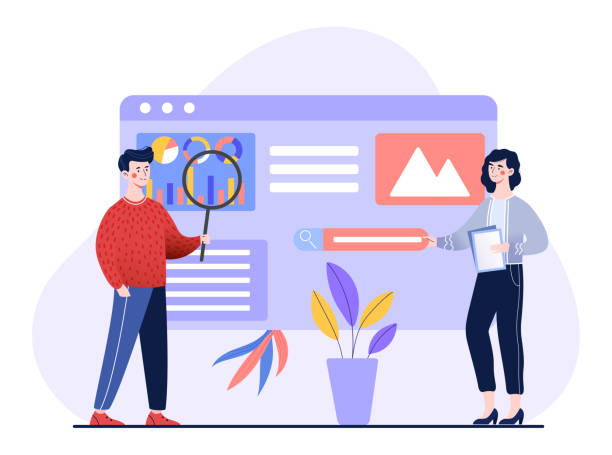
In the world of e-commerce website design, nothing is as vital as User Interface (UI) and User Experience (UX).
These two factors form the backbone of a successful online store and directly impact conversion rates and customer loyalty.
User interface refers to the look and feel of your website, while user experience relates to the ease and enjoyment of using it.
A site with beautiful UI but poor UX will discourage users.
The main goal in UX design for an e-commerce website is to reduce friction in the purchasing path and provide a smooth and pleasant experience.
Key UX principles include intuitive and simple navigation, fast loading speed, responsive design for correct display on all devices (mobile, tablet, desktop), and an easy, step-by-step payment process.
Users should be able to easily find the products they want, get enough information about them, and proceed to payment without any issues.
Thought-provoking content in this section could include: Did you know how much a few-millisecond delay in page loading can drive away potential customers? Also, transparency in presenting prices, shipping costs, and return policies is of high importance.
User-centered design, meaning placing the user at the core of the design process, ensures that your site truly meets customer needs.
This descriptive and specialized section helps you take an effective step towards designing a customer-friendly e-commerce website by deeply understanding these concepts.
| Feature | Description | Importance |
|---|---|---|
| Intuitive Navigation | Clear menus, logical product categorization | High |
| Loading Speed | Fast loading of pages and images | Critical |
| Searchability | Powerful search and advanced filters | High |
| Responsiveness | Correct display on all devices | Critical |
| Price and Stock Transparency | Clear display of prices, shipping costs, and stock | High |
SEO Optimization for Increasing E-commerce Website Visibility
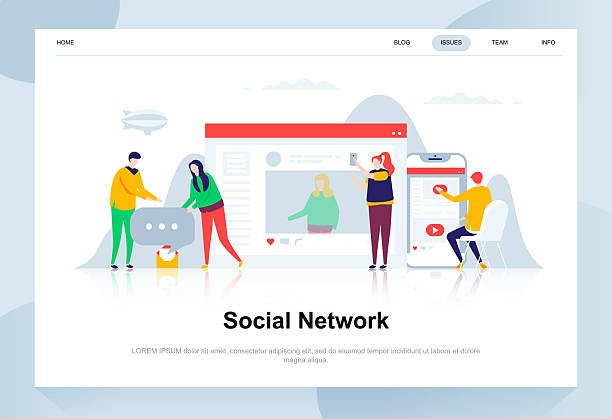
After completing your e-commerce website design, it’s time to ensure potential customers can find you.
This is where Search Engine Optimization (SEO) comes into play.
SEO is a set of strategies and tactics used to increase your site’s visibility in the organic search results of Google and other search engines.
For an e-commerce website, SEO means ensuring that your product and category pages rank well for relevant keywords.
This includes keyword research, optimizing titles and meta descriptions, using a friendly URL structure, and creating high-quality, unique content for each product.
For example, suppose you have an online store selling handicrafts.
Do you know exactly what phrases users employ to search for your product? Do you know how vital it is to use unique and engaging product descriptions, not only for SEO but also for attracting customers? Technical SEO, such as site loading speed and mobile-friendliness, also plays an important role.
Google gives higher rankings to sites that offer a better user experience.
This section of the article is an expert guide to improving your site’s ranking in search engines.
By correctly implementing SEO techniques, you will not only attract more traffic to your e-commerce website but this traffic will also be more targeted, leading to increased conversion rates and higher sales.
This is a long-term investment that brings stable and significant results for your business.
Does your current e-commerce website design cause you to lose customers and sales?
Resaweb is your solution with modern and user-friendly e-commerce website designs!
✅ Significant increase in conversion rate and sales
✅ Strong branding and gaining customer trust
⚡ Get free e-commerce website design consultation from Resaweb!
Security and Trust Building in E-commerce Website Design
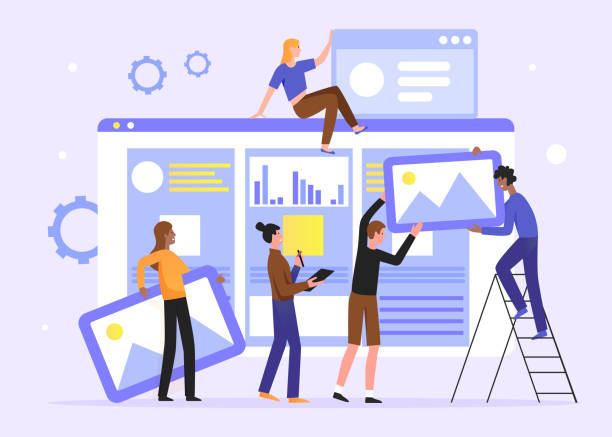
Security is one of the most important concerns for customers when shopping online.
A successful e-commerce website design must gain customer trust and ensure that their personal and financial information is protected.
The first step in this path is installing an SSL (Secure Sockets Layer) certificate.
This certificate ensures your site’s address starts with “https” and a green padlock appears next to it, indicating a secure connection.
Without SSL, browsers warn users that your site is not secure, which can severely damage your credibility.
In addition to SSL, using secure and reputable payment gateways, such as direct bank gateways or well-known payment intermediaries, is crucial.
These systems encrypt customer credit card information and keep it away from unauthorized access.
Did you know that privacy and data breaches can irreparably harm your brand’s reputation? Transparency in privacy policies, return policies, and terms and conditions also helps build trust.
Displaying Trust Badges from security entities, real customer reviews and testimonials, and providing clear communication channels for support are all factors that assure customers they are shopping in a secure and reputable environment.
Investing in security and transparency is not just a preventive measure, but a smart strategy for strengthening your brand and customer loyalty in your e-commerce website design process.
Content Marketing and Its Role in the Success of an Online Store
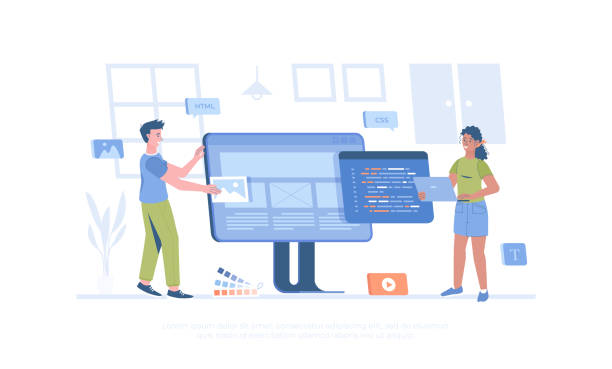
After designing your e-commerce website and ensuring its security, it’s time to attract customers and increase sales.
Content marketing is one of the most powerful tools in this area that can drive targeted traffic to your site and help you build deeper connections with your customers.
Content marketing involves creating and distributing valuable, relevant, and consistent content to attract and retain a clearly defined audience.
This content can include blog articles, educational videos, buying guides, infographics, and even entertaining stories about your products.
For example, if you sell skin and hair products, you can write articles about “The Complete Guide to Choosing the Right Sunscreen” or “5 Common Hair Care Mistakes.”
This type of content not only creates added value for users but also helps improve your site’s SEO and establishes you as an authority in your industry.
Did you know that customers are more inclined to buy from brands that provide them with knowledge and information? Publishing regular, high-quality content increases organic traffic and directs potential customers to your site.
This long-term strategy not only helps increase sales but also leads to building a loyal community around your brand.
An e-commerce website that consistently provides engaging content always stays in customers’ minds.
Inventory Management and Payment Systems in an Efficient E-commerce Website
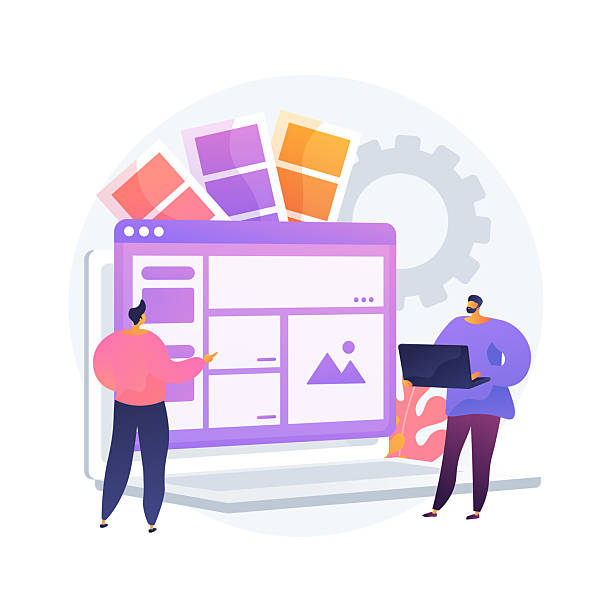
E-commerce website design is not limited to aesthetic and marketing aspects; its internal and operational management is also of vital importance.
Two main pillars in this area are inventory management and payment systems, which directly impact customer experience and your business efficiency.
A robust inventory management system allows you to accurately track your product stock, prevent sudden stock-outs, and optimize order scheduling.
This system should be able to synchronize with both online and physical sales to prevent human errors and inaccurate inventory.
Payment gateways also play a crucial role in the purchasing process.
Customers expect to be able to complete their purchases using diverse and secure payment methods.
Offering various payment options such as credit cards, direct bank gateways, mobile payments, and even Cash on Delivery (COD) can significantly increase conversion rates.
The question is, is your payment system flexible and secure enough to satisfy all your customers? An ideal e-commerce website design must pay special attention to these technical and operational details to ensure a smooth and trouble-free shopping experience for customers.
This specialized and guiding section explains the importance of coordination between these two sections for the ultimate success of an online store.
| Payment System Type | Advantages | Disadvantages | Transaction Cost (Estimated) |
|---|---|---|---|
| Direct Bank Payment Gateway | High security, direct transaction, no intermediary needed | Requires agreement with bank, technical and administrative limitations | Medium |
| Payment Intermediaries (e.g., Zarinpal, IDPay) | Easy installation, support for various cards, centralized reporting | Higher fees, reliance on intermediary, longer settlement time | High |
| Cash on Delivery (COD) | Increased customer trust, suitable for newcomers or specific markets | Risk of returned goods, liquidity issues, higher operational costs | Variable (no online transaction fee) |
Support and After-Sales Service: Key to Customer Loyalty
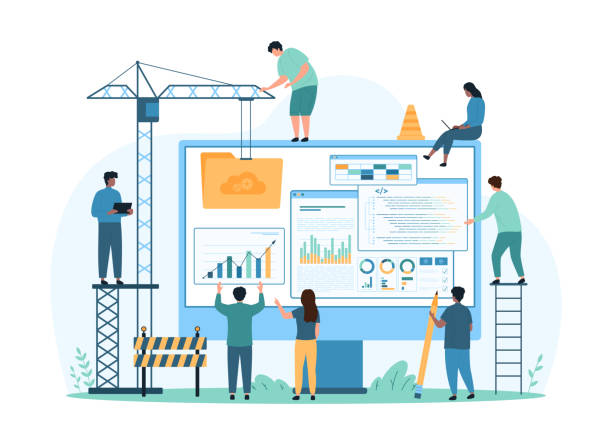
Success in e-commerce website design doesn’t just mean attracting customers, but in retaining them and turning them into loyal customers.
One of the most important factors in this regard is the quality of support and after-sales service.
In the online world, customers expect quick responses and efficient solutions to their problems.
Providing diverse communication channels such as Live Chat, phone support, email, and a Frequently Asked Questions (FAQ) section is essential.
Promptly responding to inquiries and complaints, even if it doesn’t lead to a purchase, can create a positive experience that results in future customer loyalty.
Have you ever considered how an excellent customer service experience can make the difference between a repeat purchase and losing a customer? Transparency in return policies and warranties is also of high importance.
Customers should feel secure that if they are dissatisfied or have a problem with a product, they can return it or receive after-sales service.
This descriptive and guiding section highlights the importance of investing in Customer Relationship Management (CRM) systems and training your support team.
A CRM system helps you track customer interaction history and provide more personalized services.
This approach not only increases customer satisfaction but can also lead to positive word-of-mouth marketing and sustainable growth for your e-commerce website.
Are you losing business opportunities because of an outdated website?
With Resaweb, permanently solve the problem of not attracting potential customers through your website!
✅ Attract more high-quality leads
✅ Increase brand credibility in the eyes of customers
⚡ Get free corporate website design consultation!
Data Analysis and Continuous Improvement of E-commerce Website Performance

An e-commerce website design doesn’t end with its launch; it requires continuous analysis and ongoing improvement.
Data analysis tools like Google Analytics provide invaluable information about user behavior, traffic sources, purchase paths, and exit points (bounce rate).
By analyzing this data, you can identify your site’s strengths and weaknesses and make data-driven decisions to optimize performance.
For example, you can discover which product pages have high visits but low conversion rates, or which marketing channels send the most qualified traffic to your site.
Furthermore, performing A/B Testing for various site elements such as Call-to-Action (CTA) buttons, page layouts, or product images helps you identify the best versions that have the greatest impact on conversion rates.
The analytical content in this section emphasizes the importance of data-driven thinking in online store management.
Did you know that even changing the color of a button can have a significant impact on conversion rates? Receiving direct feedback from customers through surveys or feedback forms can also provide valuable insights for improvement.
This continuous process of analysis, experimentation, and optimization ensures that your e-commerce website is always growing and adapting to market and customer needs, achieving its maximum potential.
Future Trends in E-commerce Website Design and E-commerce
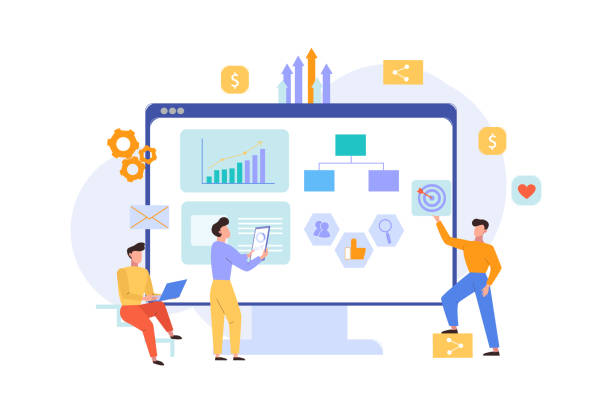
The world of e-commerce is rapidly evolving, and e-commerce website design is no exception.
To maintain competitiveness and succeed in the future, it’s essential to be familiar with emerging trends and integrate them into your strategies.
One of the most important trends is the increasing use of Artificial Intelligence (AI) and Machine Learning (ML) for personalizing the shopping experience.
Product recommendation systems, customer support chatbots, and behavioral data-driven marketing are examples of AI applications that enhance user experience.
Did you know that personalization can significantly help increase conversion rates and customer loyalty?
Augmented Reality (AR) and Virtual Reality (VR) also hold great potential for revolutionizing the online shopping experience, especially in industries like fashion and home decor.
Imagine a customer being able to virtually try on clothes or view furniture in their home space.
Voice Commerce through voice assistants like Siri or Alexa is also growing, highlighting the need for optimization for voice searches.
This informative and analytical section helps business managers gain a broader perspective on the future.
Furthermore, sustainability and Corporate Social Responsibility (CSR) have become important factors for consumers, and e-commerce websites should reflect these values in their design and operations.
Following these trends and continuously adapting to them not only strengthens the position of your e-commerce website but also prepares it for future challenges and opportunities.
Frequently Asked Questions
| Question | Answer |
|---|---|
| What is e-commerce website design? | It is the process of building and developing a website for buying and selling products or services online. |
| What features should an e-commerce website have? | Product management, shopping cart, online payment gateway, user account section, product search and filter capabilities. |
| What is the importance of User Experience (UX) in e-commerce website design? | Good user experience leads to easy navigation, a simple purchasing process, and ultimately increases customer satisfaction and conversion rates. |
| Why is SEO important for an e-commerce website? | SEO helps your site achieve higher rankings in search engine results and attract more traffic, leading to increased sales. |
| What platforms are available for e-commerce website design? | Ready-made platforms like WordPress (with WooCommerce), Shopify, PrestaShop, and also the option for custom design are available. |
And other services of Resaweb Advertising Agency in the field of advertising
Smart Advertising Campaign: Revolutionize SEO ranking improvement with user experience customization.
Smart Advertorial: A creative platform for improving customer acquisition by managing Google Ads.
Smart Conversion Rate Optimization: A combination of creativity and technology to increase sales by utilizing real data.
Smart Digital Advertising: Professional optimization to improve SEO ranking using intelligent data analysis.
Smart SEO: A creative platform for improving online growth with intelligent data analysis.
And over hundreds of other services in the field of internet advertising, advertising consulting, and organizational solutions
Internet Advertising | Advertising Strategy | Advertorial
Resources
Successful E-commerce Website Design Guide
15 Practical Ways to Increase Online Sales
How to Have a Successful Online Store?
E-commerce SEO: Everything You Need to Know
? If you are looking to elevate your business’s position in the online space, Resaweb Afarin Digital Marketing Agency, with its expertise in corporate website design and providing comprehensive digital marketing solutions, is ready to assist you on your path to achieving your goals.
📍 Tehran, Mirdamad Street, next to Bank Markazi, Southern Kazeroon Alley, Ramin Alley, No. 6

